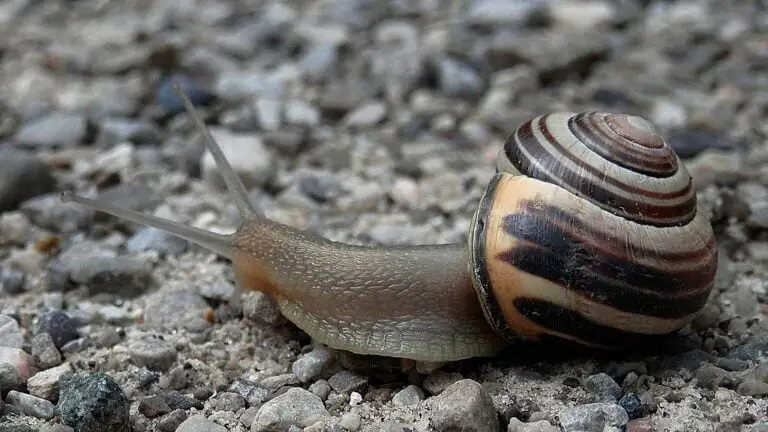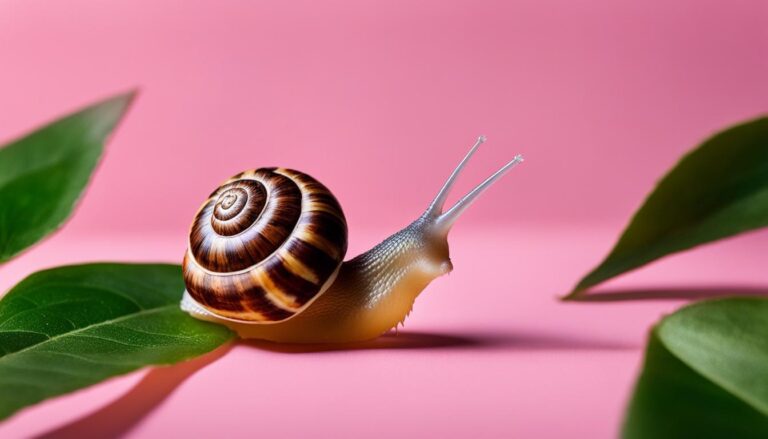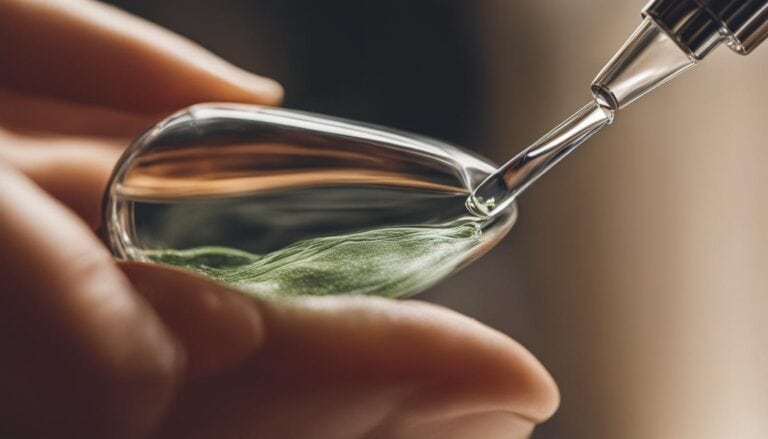Snail Mucin: The Comprehensive Guide
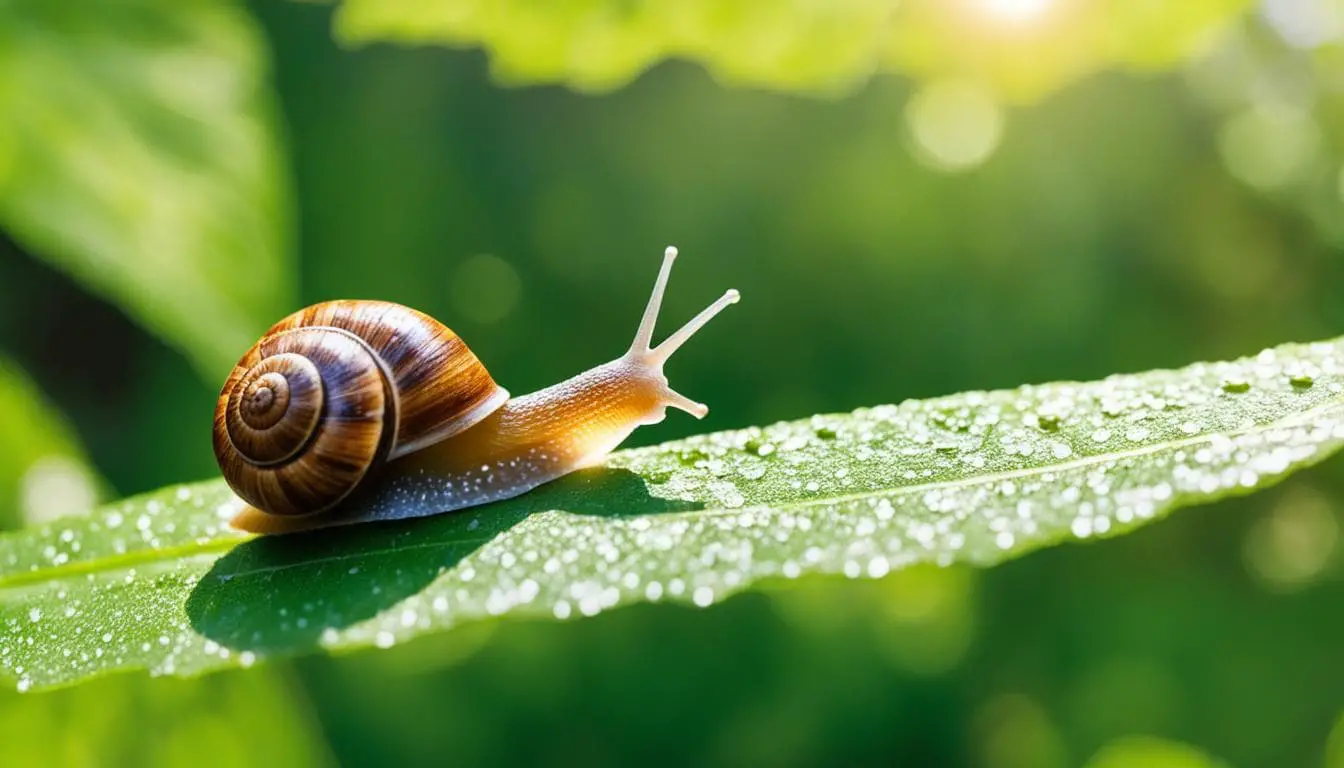
Unveiling Nature’s Secret for Ageless Beauty
In the ever-evolving world of skincare, where the quest for the elixir of youth and beauty knows no bounds, emerges an ingredient as ancient as it is revolutionary – snail mucin. This guide delves into the heart of a natural wonder, one that has journeyed from the depths of traditional remedies to the pinnacle of modern beauty regimes. Snail mucin, often veiled in mystery and surrounded by intrigue, is more than a mere skincare trend; it is a testament to nature’s ingenuity and the enduring search for age-defying skincare.
For centuries, snail mucin has been a hidden gem in various cultures, prized for its remarkable healing and rejuvenating properties. Today, it stands at the forefront of beauty and scientific research, transcending the boundaries of conventional skincare. This guide will unravel the layers of this extraordinary ingredient, revealing how a simple snail secretion has become a cornerstone in the pursuit of radiant, youthful skin.
Join us as we explore the multifaceted benefits of snail mucin, from its deep-rooted history to its pivotal role in contemporary skincare and beyond. Whether you are a skincare enthusiast or a curious newcomer, prepare to be captivated by the story of snail mucin – nature’s very own formula for timeless beauty.
What is Snail Mucin?
Known scientifically as snail secretion filtrate, this ingredient is revolutionizing the beauty industry. But what is snail mucin, and what exactly does it bring to your skincare regimen?
Definition and Composition
Snail mucin is a complex blend of proteins, enzymes, and glycoproteins, all secreted by snails to repair their own skin and shell. Its core component, glycoprotein, is esteemed for its ability to enhance skin’s health and appearance. The magic of snail mucin lies in its natural origin and its fortifying snail mucin extract, which forms part of many rejuvenating skincare formulas.
History and Traditional Uses
The use of snail mucin spans back to ancient times, where it was a revered treatment in traditional medicine. Cultures across the globe recognized the healing properties of snail mucin collection, incorporating it into various remedies. Contemporary practices have only just begun to tap into this age-old elixir for modern-day cosmetic applications.
How Snail Mucin is Harvested
Ethical sourcing is crucial when it comes to snail mucin collection. Unlike historical methods, today’s harvesting processes involve gently stimulating the snails in controlled environments to obtain their valuable secretion. This ensures that the snails are unharmed, making snail mucin not only an effective skincare ingredient but also a cruelty-free choice. For insight into the ethical and sustainable practices in snail mucin harvesting, read our detailed exploration.
By understanding the snail mucin’s composition and sourcing, we are better equipped to appreciate the value it adds to skincare products. So let’s look deeper into the world of snails and uncover the full range of effects and benefits offered by this fascinating natural ingredient.
Snail Mucin in Skincare
Let’s explore how this ancient secret has been revived in modern skincare, offering solutions spanning hydrating skincare to hyperpigmentation solutions.
Overview of Benefits for Skin Health
There are a myriad of advantages brought about by snail mucin. This singular ingredient offers deep moisturizing effects, battles signs of aging, assists in acne scar treatment, and provides hyperpigmentation solutions. Its unique composition of glycoproteins, hyaluronic acid, and antimicrobial peptides makes it an all-in-one skin savior.
Role in Moisturizing and Hydration
Hydration is the foundation of healthy skin, and snail mucin excels in this area. As a component of hydrating skincare routines, it locks in moisture and strengthens the skin’s barrier, ensuring that it remains supple and resilient against environmental stress.
Anti-Aging Properties
Yes! The quest for youth is artfully addressed by this natural anti-aging ingredient. It boosts collagen production and reduces the appearance of fine lines and wrinkles, offering a more youthful and radiant complexion over time.

Healing Acne and Acne Scars
Snail mucin’s regenerative properties make it an ideal acne scar treatment. Its ability to promote cell turnover and healing not only helps diminish scars but also prevents future acne breakouts.
Treating Hyperpigmentation and Uneven Skin Tone
Hyperpigmentation meets its match with snail mucin. It addresses dark spots and evens out skin tone by inhibiting melanin production, leading to a more balanced and even complexion.
Snail Mucin in Skincare Products: Serums, Creams, Masks
Skincare shelves are increasingly featuring snail mucin-infused products, from serums to creams, and even face masks. These products leverage the restorative power of snail mucin to deliver targeted treatments for a variety of skincare concerns.
Scientific Research on Snail Mucin
Recent studies have shed light on the powerful skin-healing properties of snail mucin, revealing its efficacy as an integral component in regenerative skincare. Research dives deep into the science behind this natural ingredient, unpacking its rich potential for enhancing skin health.
Studies on Antioxidant Properties
At the forefront of skin science, snail mucin has been identified as an excellent source of antioxidants. An antioxidant serum infused with snail mucin can effectively neutralize harmful free radicals, providing essential protection and contributing to the maintenance of youthful skin.
Collagen Production and Skin Regeneration
The quest for maintaining smooth, plump skin has led researchers to the discovery that snail mucin can stimulate collagen for skin, facilitating natural repair and regeneration. The integration of snail mucin into skincare regimens aids in fortifying the skin’s structure, promoting a firmer, more elastic complexion.
Effectiveness in Wound Healing
Regenerative skincare methods often draw from nature’s most potent substances, and snail mucin is no exception. Documented in the Dermatologic Surgery Journal, snail mucin accelerates the healing process of wounds, showcasing impressive restorative capabilities.
Reducing Inflammation and Soothing Sensitive Skin
Anti-inflammatory creams and treatments are essential for calming sensitive skin, and snail mucin stands out for its anti-inflammatory effects. Clinical evidence indicates that snail mucin can reduce skin inflammation, providing comfort and relief to those with reactive skin conditions.
Snail Mucin in Biomedical Applications
The exploration of snail mucin has transcended the boundaries of skincare, making a notable entrance into the realm of biomedical innovations. Its unique properties offer promising solutions in the field of wound care, especially in the management of diabetic skin treatment. The interplay of snail mucin with tissue engineering advancements further broadens its scope, paving the way for cutting-edge applications in regenerative medicine. Now, let’s explore the specific roles that snail mucin is playing within these critical areas of healthcare.
Wound Healing Agents and Surgical Glues
Snail mucin’s inherent ability to facilitate healing has been harnessed in the formulation of groundbreaking wound healing agents. Surgical glues that incorporate snail mucin are being developed to improve recovery times and reduce scarring, enhancing the post-procedure healing process. Biomedical Materials Journal has highlighted the efficiency and fast-acting properties of these innovative adhesives.
Role in Diabetic Wound Healing
Diabetic patients often face complications in wound healing due to poor circulation and other comorbidities. The potential of snail mucin in this area is significant, with studies indicating that it can assist in the rapid closure of cuts and ulcers, a common concern in diabetic skin treatment. As reported in the Diabetic Medicine Journal, snail mucin is proving to be a valuable asset in managing these complex wounds.
Snail Mucin in Tissue Engineering
As tissue engineering seeks to develop biological substitutes that restore, maintain, or improve tissue function, snail mucin’s bioactive compounds play a pivotal role. The material’s versatility and compatibility make it an excellent scaffold component, fostering cell growth and differentiation. This progress is evidenced by recent breakthroughs published in the International Journal of Regenerative Medicine.
Potential in Regenerative Medicine
Regenerative medicine is yet another frontier where snail mucin is set to make its mark. Its capacity for promoting cell regeneration and its anti-inflammatory properties hold great promise for treatments aimed at restoring the structure and function of damaged tissues and organs. The exploration of these prospects continues to expand, as more researchers are drawn to the potential that snail mucin offers.
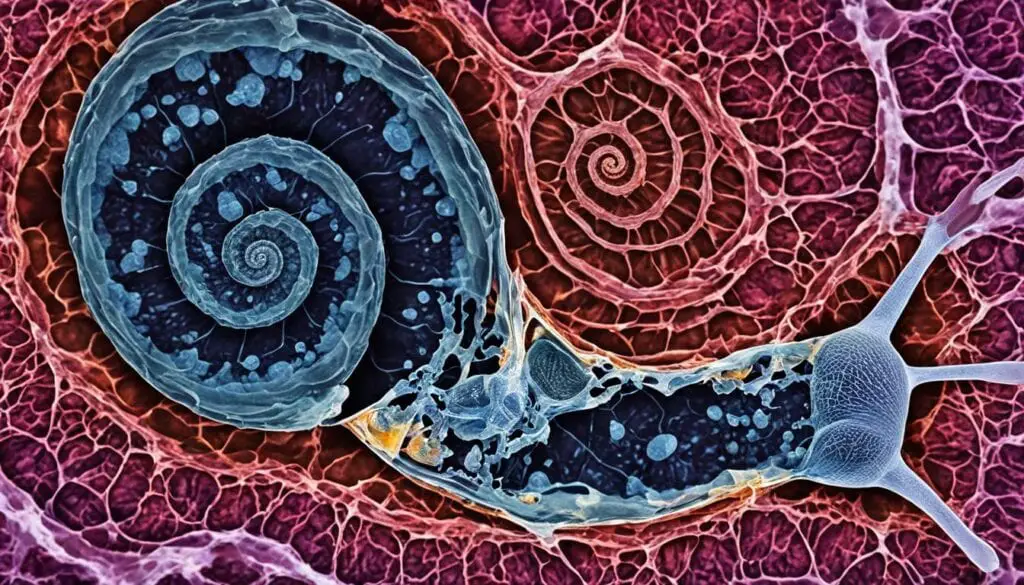
Snail Mucin in Biotechnology and Chemistry
The intersection of biotechnological developments and natural resources has fueled exciting innovations in various scientific fields. Snail mucin, a product once limited to cosmetic use, is now steering breakthroughs that harness its unique properties. Its potential in biotechnology and chemistry is not only intriguing but it’s also shaping a more sustainable approach towards material science, antimicrobial solutions, and even anticancer research.
Green Synthesis of Nanoparticles
Snail mucin has emerged as an environmentally friendly agent in the green synthesis of nanoparticles. Recognized in publications like the Journal of Nanoscience, snail mucin is being utilized for its ability to act as a stabilizing and reducing agent, promoting the formation of nanoparticles without the need for harsh chemicals. This not only makes the synthesis process more sustainable but it also opens the door to creating materials with unique biological properties.
Antimicrobial and Antifungal Applications
Amid rising concerns about antibiotic resistance, snail mucin offers promising antimicrobial and antifungal applications. Its natural compounds, as discussed in the Antimicrobial Agents Journal, have displayed efficacy against a range of pathogens. These antimicrobial solutions, derived from snail mucin, are not just effective but also present fewer side effects compared to traditional synthetic antibiotics, thus representing a new frontier in infection control.
Potential Anticancer Properties
Exciting preliminary findings signal the role of snail mucin in anticancer research. Its bioactive molecules have been analyzed for their potential to inhibit the growth of cancer cells. Although research is in the early stages, the prospective use of snail mucin’s compounds as anticancer agents promises an innovative approach to combat various forms of cancer.
Eco-friendly Alternatives in Material Science
The domain of material science greatly benefits from the augmentation of sustainable materials. As highlighted in the Sustainable Chemistry Journal, snail mucin is joining the ranks of eco-friendly resources. It offers alternatives to non-biodegradable substances, opening a path for the development of new composites that are not only effective but also environmentally responsible.
| Application | Details | Significance | Source Journal |
|---|---|---|---|
| Nanoparticle Synthesis | Use as a reducing and stabilizing agent | Minimizes environmental impact | Journal of Nanoscience |
| Antimicrobial Solutions | Effective against bacteria and fungi | Alternative to synthetic antibiotics | Antimicrobial Agents Journal |
| Anticancer Research | Inhibition of cancer cell growth | Exploration of new therapeutic options | Articles in biomedicine |
| Sustainable Materials | Biodegradable material source | Contributes to green chemistry | Sustainable Chemistry Journal |
Each stride in applying snail mucin within these emerging fields reveals the multifaceted nature of this natural compound. As its potential is further explored, you can expect to see a growing integration of snail mucin in novel biotechnological applications that prioritize efficacy alongside ecological responsibility.
Snail Mucin for Gastric Health
Exploring the myriad of health benefits offered by natural ingredients, we find snail mucin emerging not only in skincare but also as a potential ally for digestive health. Recently, this powerhouse of glycoproteins has been scrutinized for its efficacy as a natural ulcer treatment, shedding light on its protective roles within the gastrointestinal system.
Protective Effects Against Gastric Ulcers
As scientists explore natural remedies, snail mucin has been identified as a mucosal defensive agent, potentially shielding the stomach lining from ulcers and erosions. Its rich composition in healing facilitators may offer a layer of protection, preserving the gastric lining and maintaining overall digestive health. The Gastroenterology Research Journal documents its apparent ability to boost mucous production, which effectively fortifies the stomach against the risks of ulceration.
Research on Digestive Health Benefits
Initial research posits snail mucin as a contributor to gut health. Investigations into mucin for gastric care suggest that its restorative properties can be an integral part of comprehensive digestive wellness. Not only does the mucin assist in the natural healing of gastric ulcers, but it is also being studied for its general benefits to the digestive tract, including soothing inflammation and improving intestinal function.
| Aspect of Digestive Health | Role of Snail Mucin | Source of Findings |
|---|---|---|
| Ulcer Prevention | Enhances mucosal barrier | Gastroenterology Research Journal |
| Inflammation Reduction | Displays anti-inflammatory properties | Various Clinical Studies |
| Intestinal Repair | Supports regeneration of tissues | Preliminary Research Data |

With increased interest in natural ulcer treatments and the growing emphasis on holistic wellness, snail mucin holds promise as a gentle yet powerful tool in maintaining digestive health. Though more extensive clinical trials are needed to establish definitive therapeutic protocols, the potential of mucin for gastric care cannot be overlooked and may soon become an integral part of gastrointestinal therapy.
Ethical and Sustainable Practices
In the pursuit of beauty and wellness, the skincare industry faces the challenge of balancing consumer demand with ethical and sustainable practices. Snail mucin, a sought-after ingredient in the realm of ethical beauty products, must be procured in a way that adheres to these values. This section examines the conscientious methods and sustainable measures being adopted in the snail mucin realm.
Ethical Harvesting of Snail Mucin
The extraction of snail mucin has evolved from mere exploitation to responsible snail farming and harvesting practices. Ethical skincare brands are setting new standards by ensuring that snail mucin harvesting is conducted without harm to the creatures. This humane approach focuses on the wellbeing of the snails, often referred to in discussions on platforms like the Ethical Skincare Forum. The process usually involves creating a snail-friendly environment that encourages natural mucin production, which can then be collected without causing stress or damage to the snails.
Sustainability Concerns and Practices
The core of sustainable skincare revolves around minimizing environmental impact and conserving biodiversity. Sustainable practices in snail mucin production mean not only ethical treatment of the snails but also ensuring that the snail farms do not deplete natural resources or disrupt local ecosystems. Use of renewable energy sources, recycling of waste, and conservation of water are some ways through which sustainable skincare objectives are being met in the industry. These practices also extend to the packaging of snail mucin products, promoting the use of recyclable materials to reduce carbon footprint.
The Snail Farming Industry and Mucin Production
The growth of the snail farming industry is directly tied to the demand for high-quality snail mucin. As stakeholders in responsible snail farming, farmers and companies are adopting methods that ensure a stable and sustainable supply of this valuable skincare ingredient. This balance necessitates ongoing dialogue between farmers, conservationists, and the skincare industry to maintain integrity and sustainability at each step of mucin production. Entities like Sustainable Farming International advocate for these synergies, highlighting successful models in snail farming that integrate ethical treatment of snails with ecologically sound farming practices.
| Practice | Focus Area | Benefits | Industry Leader |
|---|---|---|---|
| Stress-Free Mucin Collection | Animal Welfare | High-quality mucin without harming snails | Notable Ethical Skincare Brands |
| Rewilding Snail Habitats | Biodiversity | Supports local ecosystems | Conservation Initiatives |
| Water Recycling Systems | Resource Use | Reduces water wastage | Innovative Snail Farms |
| Eco-friendly Packaging | Environmental Impact | Minimizes plastic use | Sustainable Skincare Labels |
By embracing ethical sourcing and environmentally conscious approaches, the beauty industry can rest assured that the snail mucin in our creams and serums is a testament to our ability to harness nature’s gifts thoughtfully and responsibly.
Consumer Guide
As you navigate the world of skincare, the art of selecting quality skincare is paramount to ensuring that you’re receiving the full benefits of ingredients like snail mucin. Knowledge is power when shopping for these products, so let’s demystify the process of identifying high-grade offerings and crafting personalized home skincare remedies.
How to Choose Quality Snail Mucin Products
When hunting for snail mucin products, closely scrutinize skincare product labels. Look for “snail secretion filtrate” listed near the top among the first ingredients, indicating a higher concentration. Products from reputable brands should also clearly state the percentage of snail mucin. Certification labels, such as organic or cruelty-free, can also be a strong indicator of quality and ethical production standards.
Understanding Labels and Ingredients
Deciphering the list on skincare product labels can sometimes feel like reading a foreign script. To ensure you’re selecting potent and effective products, familiarize yourself with terms related to snail mucin—such as “allantoin,” “glycolic acid,” and “hyaluronic acid”—as these are some active components in snail mucin that aid skin repair and hydration. Becoming adept at reading these labels allows for informed choices that align with your skin’s needs.
DIY Recipes and Home Remedies
If you lean towards the creativity of DIY beauty treatments, consider incorporating snail mucin into home skincare remedies. You can mix pure snail mucin with natural ingredients like aloe vera or honey to create custom face masks or serums. This hands-on approach not only adds a personal touch to your skincare ritual but also ensures that you know exactly what’s feeding your skin.
| Ingredient | Benefits | DIY Companion Ingredients |
|---|---|---|
| Snail Secretion Filtrate | Moisturizing, Anti-aging | Aloe Vera Gel, Vitamin E |
| Allantoin | Skin Softening, Healing | Cucumber Juice, Rose Water |
| Glycolic Acid | Exfoliating, Brightening | Jojoba Beads, Yogurt |
| Hyaluronic Acid | Hydration, Plumping | Glycerin, Hydrosol |
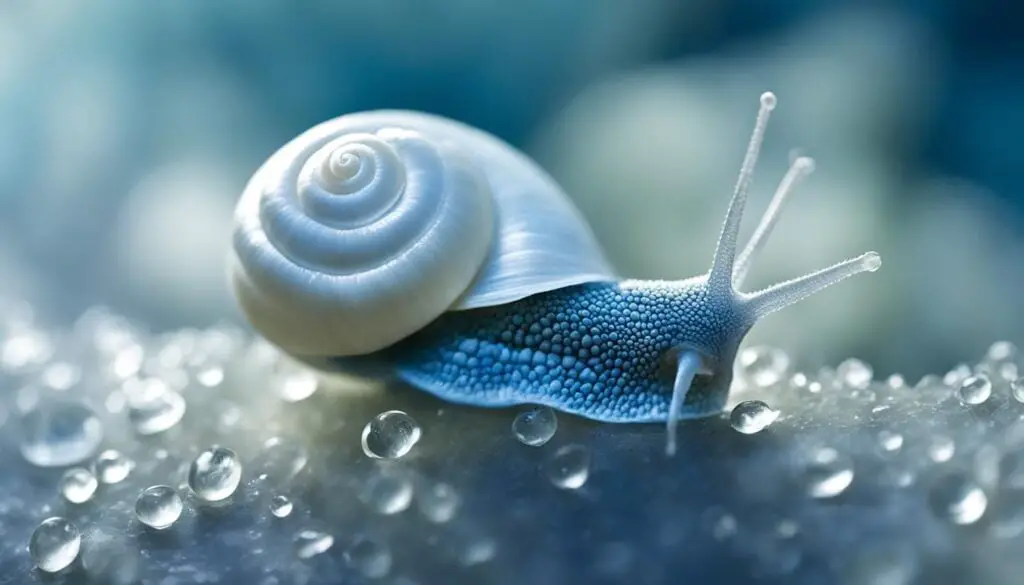
Remember, whether it’s about thorough label analysis or crafting your home concoctions, the aim is to enrich your skin’s health while enjoying the therapeutic process of self-care.
Global Market and Trends
The cosmopolitan landscape of skincare has embraced snail mucin, launching it into global acclaim. Formerly a secret confined to the borders of niche markets, this natural ingredient has transcended cultural barriers and emerged as a mainstay in the beauty routines of discerning consumers worldwide. K-beauty trends, known for their innovative and skin-centric approaches, have played a pivotal role in introducing snail mucin to the global skincare market. However, the influence of snail mucin extends far beyond Korean skincare shelves; it has woven itself into the very fabric of international beauty regimens, underscoring the industry’s inclination towards potent, science-backed natural ingredients.
Popularity in Different Regions
While K-beauty has been instrumental in the snail mucin surge, the ingredient’s popularity is not limited to Asia. Western markets have been quick to catch on, with snail mucin innovation sparking interest among European and American consumers seeking out the latest in skincare. This upsurge in international demand reflects a global shift towards products that promise efficacious results grounded in natural science.
Emerging Trends in Snail Mucin Products
The beauty industry is not known for its complacency, and snail mucin products are no exception. Advancements in formulation techniques have led to a diverse offering of products that include snail mucin in combination with other powerhouse ingredients such as peptides and antioxidants, catering to a wide range of skin concerns. This ever-evolving product line is a testament to the dynamic nature of snail mucin’s presence in the market.
Future Prospects in Various Industries
Beyond the current market, the outlook for snail mucin points towards expansive growth, crossing the realms of dermatology and even biomedicine. As research continues to unveil its multifaceted benefits, we can anticipate a surge of snail mucin applications across numerous industries. Beauty industry forecasts highlight snail mucin as a keystone of future innovations, marking it as a cornerstone for upcoming natural ingredient-based breakthroughs.
| Region | Current Trend | Expected Growth | Noteworthy Product Types |
|---|---|---|---|
| Asia (K-beauty) | Highly popular, established market presence | Stable with potential for expansion in product diversity | Serums, masks, creams |
| Europe | Growing interest, particularly in natural and organic sectors | Significant, with exploration into multi-benefit products | Anti-aging treatments, moisturizers |
| North America | Emerging trend, rapidly gaining popularity | Robust, with potential crossover into wellness and nutraceuticals | Repair-focused solutions, hydrating formulations |
With its roots deep in the rich soils of innovation, snail mucin is poised to continue its ascent, drawing the gaze of skincare enthusiasts, industry experts, and the scientific community alike. As we move forward, this unassuming ingredient is set to redefine the boundaries of skincare and illustrate the power of integrating nature’s intelligence into our daily lives.
Myths and Misconceptions
In the quest to make informed skincare choices, it’s crucial to separate fact from fiction. In this segment, we’ll clear the fog around common fallacies and assure you have the skincare ingredient truths. By dispelling these skincare myths and addressing snail mucin misconceptions, you’ll be empowered to make decisions based on reality, not rumor.
Debunking Common Myths
Despite snail mucin’s rising popularity, it’s not immune to skincare myths. A prime example is the myth that snail mucin is unhygienic or contains harmful bacteria. Science, however, starkly contradicts this notion, as snail mucin undergoes a rigorous purification process before it’s ever included in your skincare products. Furthermore, snail mucin is celebrated for its antimicrobial properties, making it a safe and beneficial addition to your regimen.
Another widespread fallacy is that snail mucin’s effects are merely placebo. Cutting-edge research documented in the ‘Mythbusters in Dermatology Journal’ provides a multitude of clinical findings confirming its efficacy in promoting collagen production, reducing the appearance of wrinkles, and enhancing skin hydration. Thus, the utility of snail mucin far surpasses anecdotal evidence.

Addressing Consumer Concerns
It’s natural to have concerns when integrating new ingredients into your skincare routine. One common worry is whether snail mucin might trigger an allergic reaction. Allergies can be a concern with any skincare product, but snail mucin is generally well-tolerated. If you have a known mollusk allergy, consult a healthcare provider prior to use. For peace of mind, perform a patch test or seek out hypoallergenic products featuring snail mucin.
Considering the environmental impact, you might also wonder whether the popularity of snail mucin is sustainable. Ethical harvesting and farming methods ensure a balance between high-quality skincare and conservation. Brands are increasingly committed to transparency and sustainable practices, a trend that encourages responsible consumerism.
Your quest for truth in skincare doesn’t end here. Continue exploring, ask questions, and choose products that align with both your skincare needs and your values. With knowledge as your tool, you’re set to craft a skincare routine based on facts, not misconceptions. Uncover the truths and dispel the myths about snail mucin in our detailed exploration of common misconceptions.
Frequently Asked Questions
With the rise of snail mucin in skincare, many consumers are turning to snail mucin FAQs for answers to their pressing skincare queries. Understanding the benefits and correct usage of this ingredient is crucial. Here, we’ve gathered common inquiries accompanied by expert skincare advice to provide clarity and expand your knowledge about this miraculous substance.
Compilation of Common Questions and Expert Answers
| Question | Expert Answer |
|---|---|
| What are the main skincare benefits of snail mucin? | Snail mucin is known for its hydrating, anti-aging, and wound-healing properties. It helps in collagen production, reducing fine lines, and improving skin texture. |
| Is snail mucin suitable for all skin types? | Yes, generally snail mucin is well-tolerated by all skin types, due to its naturally soothing properties. However, those with sensitive skin should perform a patch test first. |
| How do you integrate snail mucin into your skincare routine? | Snail mucin can be applied as a serum or moisturizer. For best results, use after cleansing and toning, but before heavier creams or oils. |
| Can snail mucin help with acne and acne scars? | Yes, its regenerative properties can accelerate healing of acne and potentially reduce the visibility of scars over time. |
| Are there any side effects to using snail mucin? | Side effects are rare, but as with any skincare product, there’s a chance of irritation or allergy, particularly for those allergic to mollusks. |
| How is snail mucin ethically sourced? | Quality skincare brands use cruelty-free methods that ensure the safety and well-being of the snails during the mucin collection process. |
| How often should I use snail mucin products? | They can be used daily as part of both morning and evening skincare routines. Some products may advise different frequencies, so always check the label. |

As you incorporate snail mucin into your skincare regimen, always pay close attention to your skin’s response and consult a dermatologist with any concerns. Remember, personal experience may vary, and it’s essential to adapt usage to suit your unique skincare needs. With these insights, you’re better equipped to harness the full potential of snail mucin for your skin’s benefit.
Conclusion and Future Directions
Throughout this exploration of snail mucin, it’s evident that this remarkable natural ingredient has established itself firmly within the skincare universe. Equipped with a knowledge of snail mucin’s benefits, from hydration to healing, you’re now aware of its multifunctional role in advancing skincare formulations. By capturing this snail mucin summary, we’ve witnessed the innovative integration of an ancient remedy into modern beauty and health regimens, and peeked into the ethical and sustainable practices shaping its future.
Summing Up the Current State of Knowledge
In summary, mucin research future looks promising, with advanced skincare research continuously unfolding new dimensions of its utility and efficacy. The understanding of snail mucin has progressed from traditional uses to a noted ingredient in cutting-edge skincare. The collective evidence spells a unified narrative: snail mucin is more than just a transient trend—it’s a testament to the power of natural ingredients in providing tangible skincare solutions.
Potential Future Research and Applications
As we look ahead, the potential for further research and applications in the field of snail mucin is vast. Innovation in skincare research paves the way for snail mucin to transcend beyond topical uses, possibly venturing into new territories such as internal health and advanced biomedical solutions. Anticipated leaps in technology and methodology could reveal more about the systemic effects of snail mucin, harnessing its full spectrum of properties. As the future of natural ingredients continues to evolve, snail mucin stands as a beacon, guiding the path towards greener, more sustainable, and effective skincare advancements.
FAQ
What is snail mucin, and how is it used in skincare?
Snail mucin, also known as snail secretion filtrate, is a natural substance produced by snails. It is rich in glycoproteins, hyaluronic acid, and antioxidants, making it beneficial for skin hydration, repair, and protection. It is commonly found in various skincare products such as serums, creams, and masks.
Can snail mucin really help improve my acne and acne scars?
Yes, many users and clinical studies report that snail mucin can be effective in treating acne and helping to fade acne scars due to its regenerative properties that promote cell turnover and its anti-inflammatory components.
Is the collection of snail mucin harmful to snails?
Responsible snail mucin collection is designed to be humane and ethical, ensuring that snails are not harmed during the process. This practice is closely monitored by organizations that establish international standards for snail farming and mucin collection.
Are there scientific studies supporting the benefits of snail mucin?
Yes, various scientific studies have confirmed the skin benefits of snail mucin. Research highlights its ability to promote collagen production, aid in skin regeneration, and provide antioxidants that protect the skin.
Can snail mucin be used for medical purposes outside of skincare?
Snail mucin has biomedical applications such as being a component in wound healing agents, surgical glues, and in tissue engineering. Its regenerative properties make it a promising substance in regenerative medicine and diabetic wound care.
How do I choose a quality snail mucin skincare product?
To choose a quality snail mucin product, look for high concentrations of snail secretion filtrate in the ingredients list, products with minimal additional ingredients, and those produced by reputable brands. Reading consumer reviews and product labels can also help determine the efficacy of the products.
How does snail mucin align with ethical and sustainable practices in the beauty industry?
Snail mucin aligns with ethical and sustainable practices by promoting humane harvesting methods and supporting natural ingredient sources. Many brands are transparent about their sourcing and production, ensuring sustainability and ethical responsibility in the snail farming industry.
Are there any misconceptions about using snail mucin in skincare?
There are misconceptions, such as snail mucin being unsanitary or causing harm to snails. However, when properly refined and ethically sourced, snail mucin is safe and clean for cosmetic use, and collection methods do not harm the snails if done responsibly.


